The UEFA Champions League is down to the final eight teams.
With the quarterfinal draw looming, ME takes a look at the tactics of each team still involved in an effort to gauge how they'll perform.
Inside, you'll find typical formations, attacking and defensive tendencies and a key player or three for each of the factions.
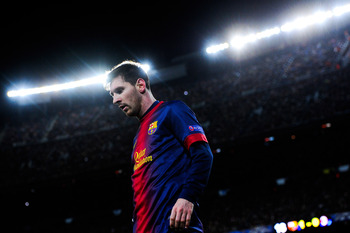
David Ramos/Getty Images

Gonzalo Arroyo Moreno/Getty Images

Dean Mouhtaropoulos/Getty Images
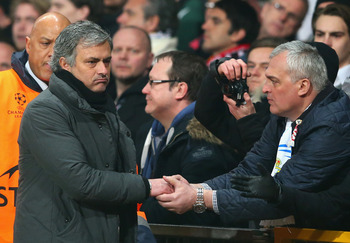
Alex Livesey/Getty Images
Jose Mourinho's Real Madrid have been far from bulletproof this season. His 4-2-3-1 formation has issues.
It is reliant on two players—Xabi Alonso and Cristiano Ronaldo—and if you shut them down, you can beat them. That's easier said than done, but Borussia Dortmund managed it, and Manchester United did so for 60 minutes.
Mourinho's reflex is to put Luka Modric on, who is more mobile than Alonso yet holds the same creative ability, but ideally his side will play on the counterattack and not look to hold the ball for long periods (they do nothing with it).
Despite being "found out" a few times this season, los Blancos have game-winners in their squad and a hungry, insatiable thirst for "la Decima."
Key players: Xabi Alonso, Cristiano Ronaldo
With the quarterfinal draw looming, ME takes a look at the tactics of each team still involved in an effort to gauge how they'll perform.
Inside, you'll find typical formations, attacking and defensive tendencies and a key player or three for each of the factions.
Barcelona

David Ramos/Getty Images
We know the drill by now.
Tiki-taka, close passing, high energy, high pressing.
The concerns about this team going flat have been allayed by an incredible performance at home against AC Milan, but the most important takeaway from that game was els Blaugrana's willingness to change.
For the first time in a long time, Lionel Messi was deployed as a No. 10 rather than a No. 9, making Barca tough to guess and therefore tough to plan for once more.
Either way, you know that when you're on the ball, you'll be harassed constantly. When off the ball, you'll be chasing shadows.
Key players: Sergio Busquets, Xavi, Lionel Messi
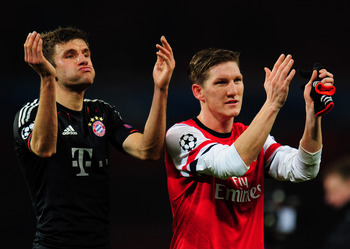
Shaun Botterill/Getty Images

Jasper Juinen/Getty Images
Juergen Klopp uses a varied system at Borussia Dortmund that changes each and every time they play.
He sets up a basic 4-2-3-1 formation with freedom of movement across the forward line—Robert Lewandowski drops in from striker, Mario Goetze roams from sideline to sideline and Marco Reus drifts in off the left to find weaknesses.
If none of that works, Ilkay Gundogan dictates the tempo of the game from his deep-lying playmaker spot and Lewandowski uses his aerial prowess to hold the ball up in dangerous areas.
They press high, play fast and look almost unplayable at times. Sven Bender is the best in the business when it comes to shutting down opposing No. 10s.
Key players: Mario Goetze, Ilkay Gundogan
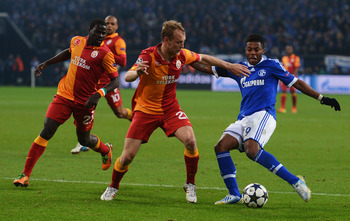
Lars Baron/Getty Images
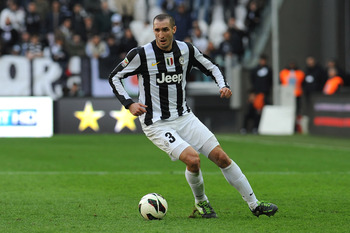
Valerio Pennicino/Getty Images
Juventus are tactically marvelous, and Antonio Conte has done a
superb job of crafting a formation that suits his deep talent pool.
The Old Lady play a 3-5-2 formation, combining defensive steel with attacking prowess and a high energy, vertical midfield.
The creative onus falls on Andrea Pirlo (the "regista") and Mirko Vucinic (the linkup player). Pirlo sits deep and dictates while his midfield shuttlers run the channels and open up passing lanes. Meanwhile, Vucinic collects Pirlo's passes and distributes them further ahead.
The only weakness is striker, where Sebastian Giovinco has underwhelmed.
Key players: Andrea Pirlo, Mirko Vucinic, Claudio Marchisio
Tiki-taka, close passing, high energy, high pressing.
The concerns about this team going flat have been allayed by an incredible performance at home against AC Milan, but the most important takeaway from that game was els Blaugrana's willingness to change.
For the first time in a long time, Lionel Messi was deployed as a No. 10 rather than a No. 9, making Barca tough to guess and therefore tough to plan for once more.
Either way, you know that when you're on the ball, you'll be harassed constantly. When off the ball, you'll be chasing shadows.
Key players: Sergio Busquets, Xavi, Lionel Messi
Bayern Munich

Shaun Botterill/Getty Images
Bayern Munich are the epitome of an efficient, modern footballing force.
They blend the popular 4-2-3-1 formation into their side, but tweak it to allow the best of every player to shine through.
Jupp Heynckes has dependable Dante at centre-back, marauding Philipp Lahm at full-back and a holding midfield pivot to envy in Bastian Schweinsteiger and Javi Martinez.
The threat comes from their electric front men, and Mario Mandzukic's seamless transition into this side has truly unlocked the potential in Thomas Mueller. As the pair drift across defensive lines, it becomes apparent their linkup play is astounding.
If you manage to stop those two, you better hope you've got enough in the locker to address the threat of Franck Ribery, too.
Key players: Thomas Mueller, Bastian Schweinsteiger
They blend the popular 4-2-3-1 formation into their side, but tweak it to allow the best of every player to shine through.
Jupp Heynckes has dependable Dante at centre-back, marauding Philipp Lahm at full-back and a holding midfield pivot to envy in Bastian Schweinsteiger and Javi Martinez.
The threat comes from their electric front men, and Mario Mandzukic's seamless transition into this side has truly unlocked the potential in Thomas Mueller. As the pair drift across defensive lines, it becomes apparent their linkup play is astounding.
If you manage to stop those two, you better hope you've got enough in the locker to address the threat of Franck Ribery, too.
Key players: Thomas Mueller, Bastian Schweinsteiger
Borussia Dortmund

Jasper Juinen/Getty Images
He sets up a basic 4-2-3-1 formation with freedom of movement across the forward line—Robert Lewandowski drops in from striker, Mario Goetze roams from sideline to sideline and Marco Reus drifts in off the left to find weaknesses.
If none of that works, Ilkay Gundogan dictates the tempo of the game from his deep-lying playmaker spot and Lewandowski uses his aerial prowess to hold the ball up in dangerous areas.
They press high, play fast and look almost unplayable at times. Sven Bender is the best in the business when it comes to shutting down opposing No. 10s.
Key players: Mario Goetze, Ilkay Gundogan
Galatasaray

Lars Baron/Getty Images
Galatasaray are a huge tactical wild card coming into the UEFA Champions League quarterfinals.
They largely played a 4-4-2 formation throughout the group stage, but with the January additions of Wesley Sneijder and Didier Drogba, things have become a little tough to predict.
Fatih Terim has tried a 4-2-3-1 with Sneijder "in the hole" domestically, but a striking conundrum in Burak Yilmaz vs. Didier Drogba continues to rear its head.
Whatever happens, they play in a similar way—move the ball quickly, use the flanks and look for their star striker. Burak has thrived off consistent service and, with eight goals so far, is joint-top scorer with Cristiano Ronaldo.
Key players: Burak Yilmaz, Hamit Altintop
They largely played a 4-4-2 formation throughout the group stage, but with the January additions of Wesley Sneijder and Didier Drogba, things have become a little tough to predict.
Fatih Terim has tried a 4-2-3-1 with Sneijder "in the hole" domestically, but a striking conundrum in Burak Yilmaz vs. Didier Drogba continues to rear its head.
Whatever happens, they play in a similar way—move the ball quickly, use the flanks and look for their star striker. Burak has thrived off consistent service and, with eight goals so far, is joint-top scorer with Cristiano Ronaldo.
Key players: Burak Yilmaz, Hamit Altintop
Juventus

Valerio Pennicino/Getty Images
The Old Lady play a 3-5-2 formation, combining defensive steel with attacking prowess and a high energy, vertical midfield.
The creative onus falls on Andrea Pirlo (the "regista") and Mirko Vucinic (the linkup player). Pirlo sits deep and dictates while his midfield shuttlers run the channels and open up passing lanes. Meanwhile, Vucinic collects Pirlo's passes and distributes them further ahead.
The only weakness is striker, where Sebastian Giovinco has underwhelmed.
Key players: Andrea Pirlo, Mirko Vucinic, Claudio Marchisio
Malaga

Gonzalo Arroyo Moreno/Getty Images
Manuel Pellegrini is combining
attacking prowess with defensive stability to punch (arguably) above his
weight in the UEFA Champions League.
He uses either a 4-4-2 or a 4-2-3-1 formation, and while Isco takes the credit drifting in off the left-hand side, Martin Demichelis and Weligton are proving a formidable central defensive duo.
In conversation with B/R's Karl Matchett—who has covered Malaga frequently during this campaign—he identified a lack of pace in the final third, such is the static nature of the strike force.
Ignacio Camacho, who has come out of nowhere this season, deserves a lot of credit for his fast-track to maturity as a player.
Key players: Martin Demichelis, Isco
He uses either a 4-4-2 or a 4-2-3-1 formation, and while Isco takes the credit drifting in off the left-hand side, Martin Demichelis and Weligton are proving a formidable central defensive duo.
In conversation with B/R's Karl Matchett—who has covered Malaga frequently during this campaign—he identified a lack of pace in the final third, such is the static nature of the strike force.
Ignacio Camacho, who has come out of nowhere this season, deserves a lot of credit for his fast-track to maturity as a player.
Key players: Martin Demichelis, Isco
Paris Saint-Germain

Dean Mouhtaropoulos/Getty Images
Carlo Ancelotti took about four months to work out what the
best formation for his star-studded side was, but he's finally settled
on a 4-2-2-2 that allows his players to express themselves.
The midfield engine room is occupied by terrier Blaise Matuidi and deep-lying playmaker Marco Verratti, but this side ultimately leans on the skill and prowess of target man Zlatan Ibrahimovic.
When attacking, the formation is fluid. The team often looks to Lucas Moura, from the right, to initiate counterattacks and beat his markers.
In defence, they drop into two banks of four and remain a close-knit unit, with one striker sitting deeper to link the play (usually Ezequiel Lavezzi) and one sitting on the halfway line.
Key players: Blaise Matuidi, Zlatan Ibrahimovic
The midfield engine room is occupied by terrier Blaise Matuidi and deep-lying playmaker Marco Verratti, but this side ultimately leans on the skill and prowess of target man Zlatan Ibrahimovic.
When attacking, the formation is fluid. The team often looks to Lucas Moura, from the right, to initiate counterattacks and beat his markers.
In defence, they drop into two banks of four and remain a close-knit unit, with one striker sitting deeper to link the play (usually Ezequiel Lavezzi) and one sitting on the halfway line.
Key players: Blaise Matuidi, Zlatan Ibrahimovic
Real Madrid

Alex Livesey/Getty Images
It is reliant on two players—Xabi Alonso and Cristiano Ronaldo—and if you shut them down, you can beat them. That's easier said than done, but Borussia Dortmund managed it, and Manchester United did so for 60 minutes.
Mourinho's reflex is to put Luka Modric on, who is more mobile than Alonso yet holds the same creative ability, but ideally his side will play on the counterattack and not look to hold the ball for long periods (they do nothing with it).
Despite being "found out" a few times this season, los Blancos have game-winners in their squad and a hungry, insatiable thirst for "la Decima."
Key players: Xabi Alonso, Cristiano Ronaldo
Categories: soccer
